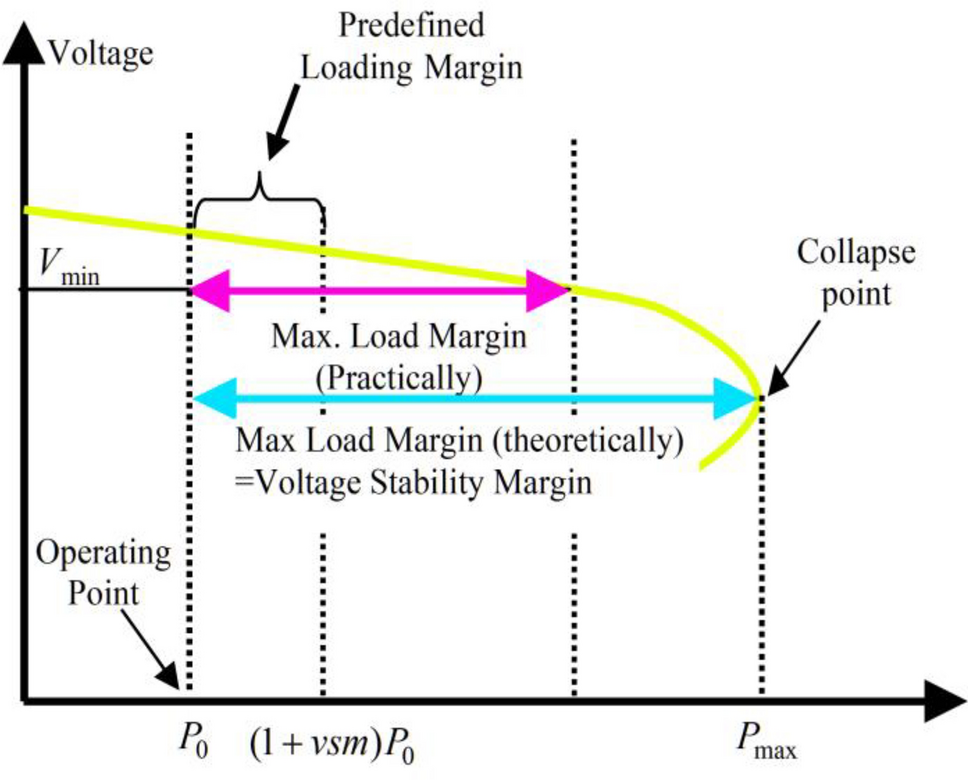doi.org/10.1038/s41598-024-61412-9
Preview meta tags from the doi.org website.
Linked Hostnames
29- 147 links todoi.org
- 72 links toscholar.google.com
- 24 links towww.nature.com
- 8 links toadsabs.harvard.edu
- 8 links toscholar.google.co.uk
- 8 links towww.ncbi.nlm.nih.gov
- 7 links towww.springernature.com
- 4 links topartnerships.nature.com
Thumbnail

Search Engine Appearance
Optimal distribution grid allocation of reactive power with a focus on the particle swarm optimization technique and voltage stability - Scientific Reports
A structured approach to managing reactive power is imperative within the context of power systems. Among the restructuring initiatives in the electrical sector, power systems have undergone delineation into three principal categories: generation, transmission, and distribution entities, each of which is overseen by an independent system operator. Notably, active power emerges as the predominant commodity transacted within the electrical market, with the autonomous grid operator assuming the responsibility of ensuring conducive conditions for the execution of energy contracts across the transmission infrastructure. Ancillary services, comprising essential frameworks for energy generation and delivery to end-users, encompass reactive power services pivotal in the regulation of bus voltage. Of particular significance among the array of ancillary services requisite in a competitive market milieu is the provision of adequate reactive power to uphold grid safety and voltage stability. A salient impediment to the realization of energy contracts lies in the inadequacy of reactive power within the grid, which poses potential risks to its operational safety and voltage equilibrium. The optimal allocation of the reactive power load is predicated upon presumptions of consistent outcomes within the active power market. Under this conceptual framework, generators are afforded continual compensation for the provision of reactive power indispensable for sustaining their active energy production endeavors.
Bing
Optimal distribution grid allocation of reactive power with a focus on the particle swarm optimization technique and voltage stability - Scientific Reports
A structured approach to managing reactive power is imperative within the context of power systems. Among the restructuring initiatives in the electrical sector, power systems have undergone delineation into three principal categories: generation, transmission, and distribution entities, each of which is overseen by an independent system operator. Notably, active power emerges as the predominant commodity transacted within the electrical market, with the autonomous grid operator assuming the responsibility of ensuring conducive conditions for the execution of energy contracts across the transmission infrastructure. Ancillary services, comprising essential frameworks for energy generation and delivery to end-users, encompass reactive power services pivotal in the regulation of bus voltage. Of particular significance among the array of ancillary services requisite in a competitive market milieu is the provision of adequate reactive power to uphold grid safety and voltage stability. A salient impediment to the realization of energy contracts lies in the inadequacy of reactive power within the grid, which poses potential risks to its operational safety and voltage equilibrium. The optimal allocation of the reactive power load is predicated upon presumptions of consistent outcomes within the active power market. Under this conceptual framework, generators are afforded continual compensation for the provision of reactive power indispensable for sustaining their active energy production endeavors.
DuckDuckGo
Optimal distribution grid allocation of reactive power with a focus on the particle swarm optimization technique and voltage stability - Scientific Reports
A structured approach to managing reactive power is imperative within the context of power systems. Among the restructuring initiatives in the electrical sector, power systems have undergone delineation into three principal categories: generation, transmission, and distribution entities, each of which is overseen by an independent system operator. Notably, active power emerges as the predominant commodity transacted within the electrical market, with the autonomous grid operator assuming the responsibility of ensuring conducive conditions for the execution of energy contracts across the transmission infrastructure. Ancillary services, comprising essential frameworks for energy generation and delivery to end-users, encompass reactive power services pivotal in the regulation of bus voltage. Of particular significance among the array of ancillary services requisite in a competitive market milieu is the provision of adequate reactive power to uphold grid safety and voltage stability. A salient impediment to the realization of energy contracts lies in the inadequacy of reactive power within the grid, which poses potential risks to its operational safety and voltage equilibrium. The optimal allocation of the reactive power load is predicated upon presumptions of consistent outcomes within the active power market. Under this conceptual framework, generators are afforded continual compensation for the provision of reactive power indispensable for sustaining their active energy production endeavors.
General Meta Tags
163- titleOptimal distribution grid allocation of reactive power with a focus on the particle swarm optimization technique and voltage stability | Scientific Reports
- titleClose banner
- titleClose banner
- X-UA-CompatibleIE=edge
- applicable-devicepc,mobile
Open Graph Meta Tags
5- og:urlhttps://www.nature.com/articles/s41598-024-61412-9
- og:typearticle
- og:site_nameNature
- og:titleOptimal distribution grid allocation of reactive power with a focus on the particle swarm optimization technique and voltage stability - Scientific Reports
- og:imagehttps://media.springernature.com/m685/springer-static/image/art%3A10.1038%2Fs41598-024-61412-9/MediaObjects/41598_2024_61412_Fig1_HTML.png
Twitter Meta Tags
6- twitter:site@SciReports
- twitter:cardsummary_large_image
- twitter:image:altContent cover image
- twitter:titleOptimal distribution grid allocation of reactive power with a focus on the particle swarm optimization technique and voltage stability
- twitter:descriptionScientific Reports - Optimal distribution grid allocation of reactive power with a focus on the particle swarm optimization technique and voltage stability
Item Prop Meta Tags
5- position1
- position2
- position3
- position4
- publisherSpringer Nature
Link Tags
15- alternatehttps://www.nature.com/srep.rss
- apple-touch-icon/static/images/favicons/nature/apple-touch-icon-f39cb19454.png
- canonicalhttps://www.nature.com/articles/s41598-024-61412-9
- icon/static/images/favicons/nature/favicon-48x48-b52890008c.png
- icon/static/images/favicons/nature/favicon-32x32-3fe59ece92.png
Emails
1Links
305- http://adsabs.harvard.edu/cgi-bin/nph-data_query?link_type=ABSTRACT&bibcode=2008ITPSy..23.1601S
- http://adsabs.harvard.edu/cgi-bin/nph-data_query?link_type=ABSTRACT&bibcode=2008MaTec..23...45L
- http://adsabs.harvard.edu/cgi-bin/nph-data_query?link_type=ABSTRACT&bibcode=2010ApEn...87.1919N
- http://adsabs.harvard.edu/cgi-bin/nph-data_query?link_type=ABSTRACT&bibcode=2013ITPSy..28.4568M
- http://adsabs.harvard.edu/cgi-bin/nph-data_query?link_type=ABSTRACT&bibcode=2018ApEn..210..827G